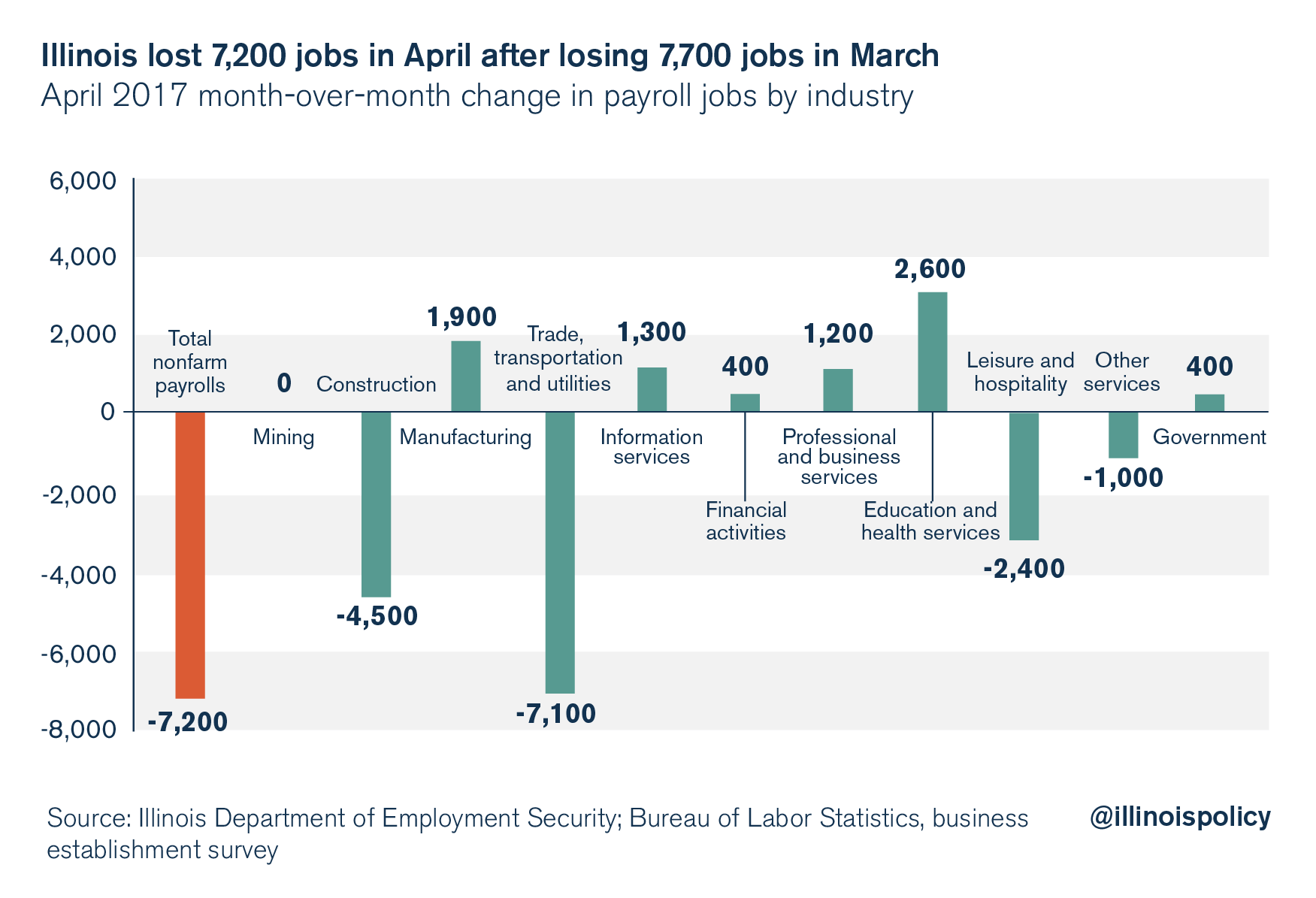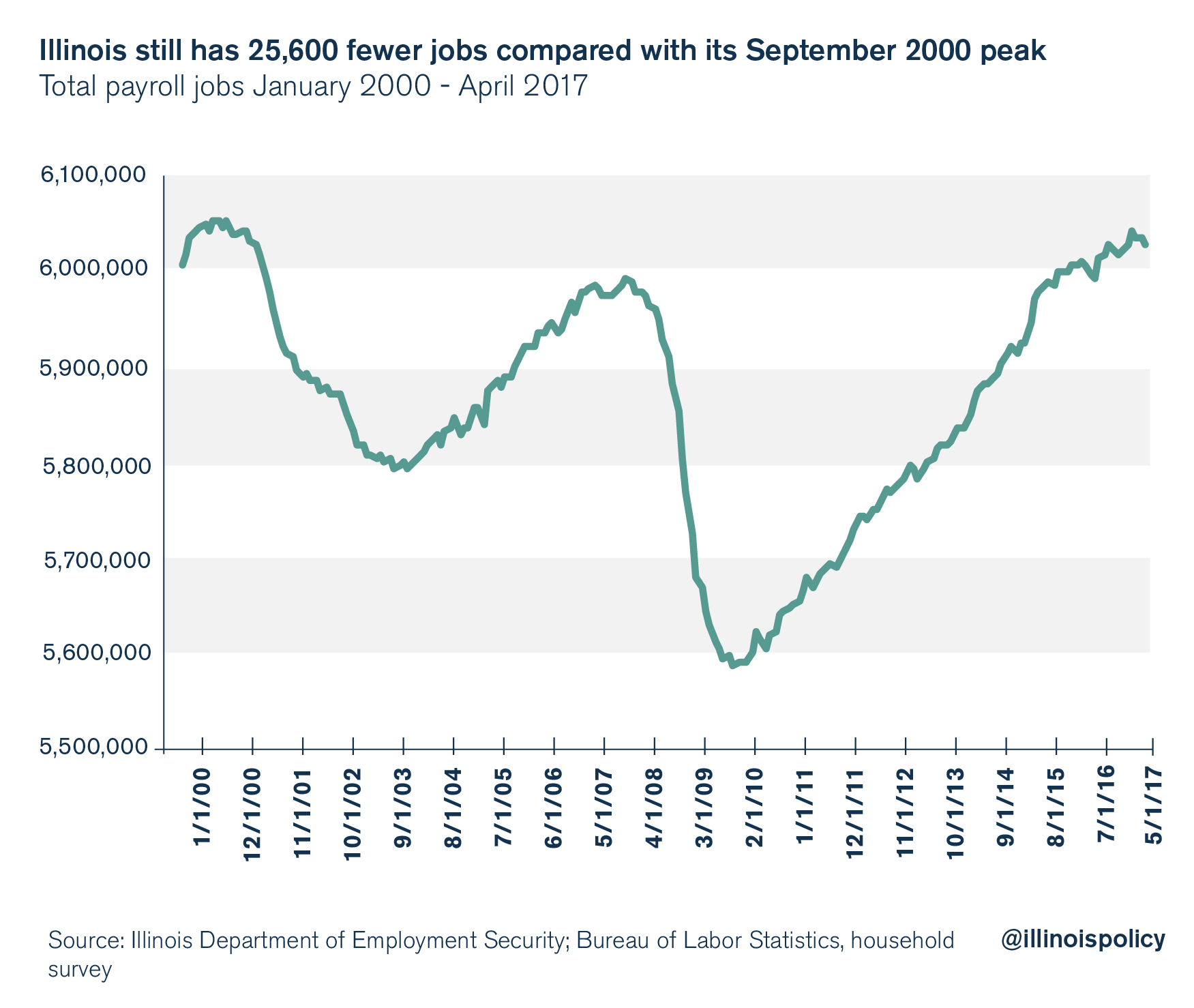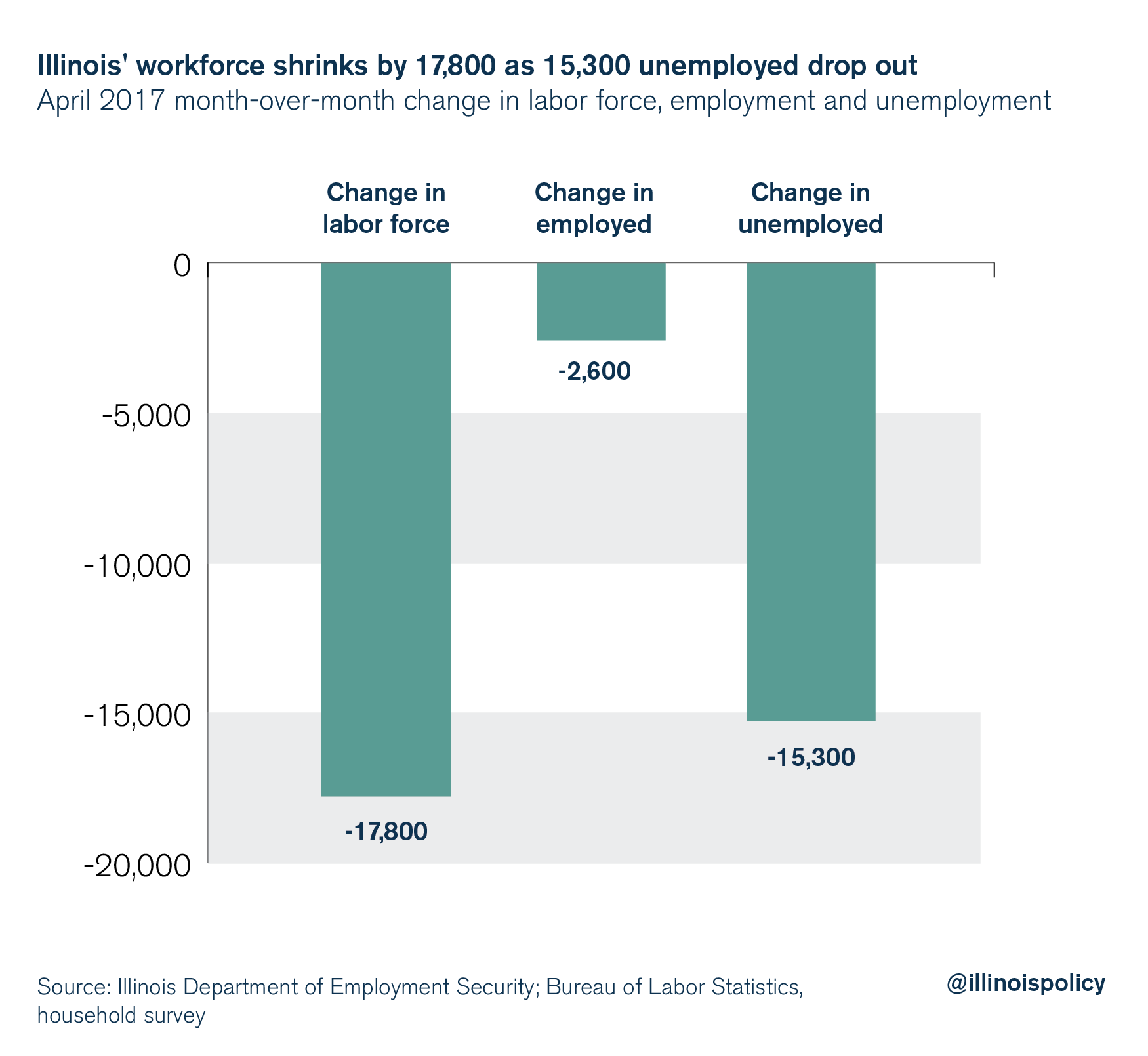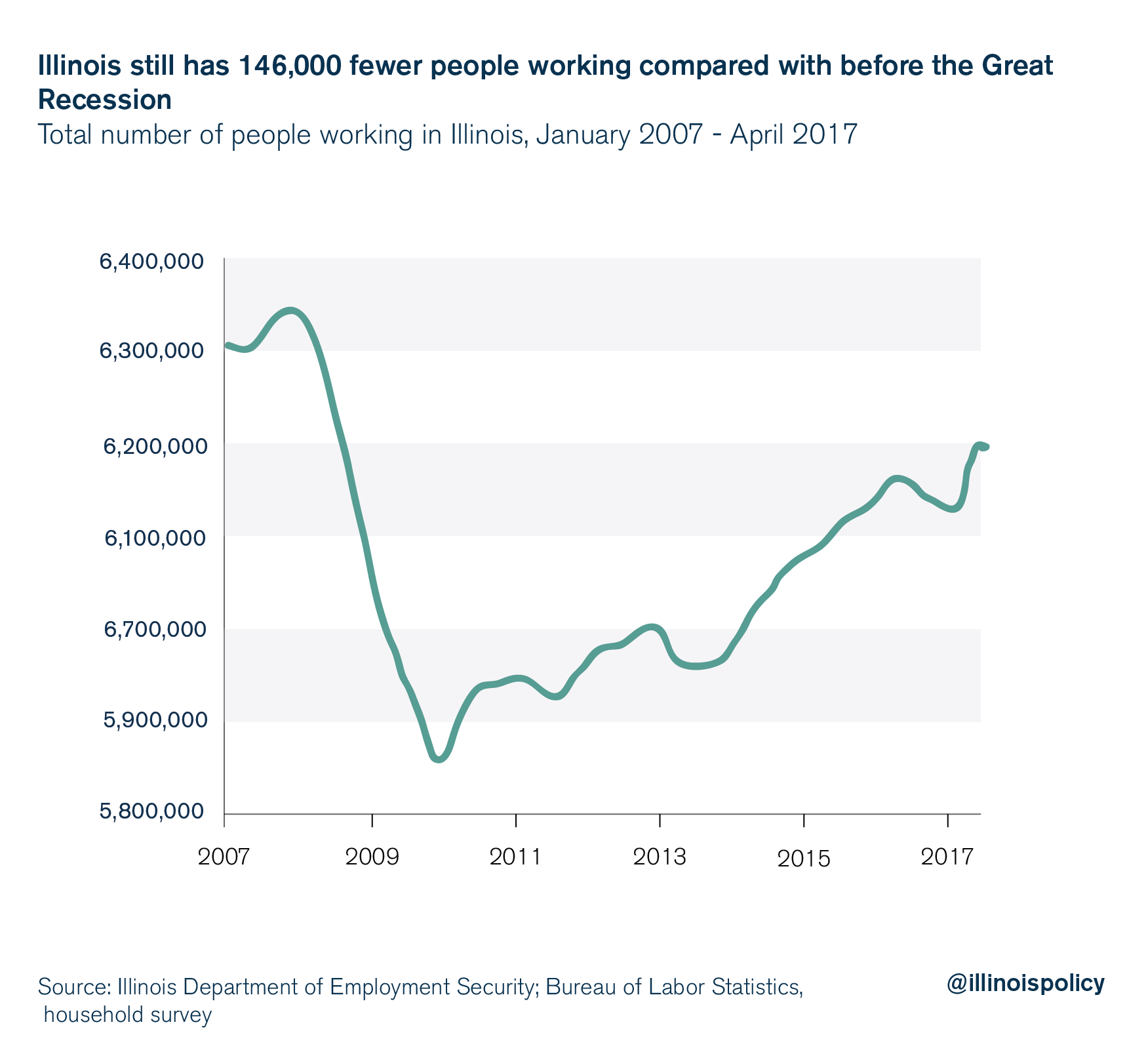Illinois loses 7,200 jobs in April, workforce shrinks by 17,800
Illinois still has 25,600 fewer jobs compared with the year 2000. Illinois is one of the only states in the country to have fewer jobs today than at the turn of the century.
Illinois’ unsteady labor force shed another 7,200 jobs on net in April, according to a new release from the Illinois Department of Employment Security.
The unemployment rate fell to 4.7 percent from 4.9 percent. However, the entire decline in the jobless rate was because more than 15,000 unemployed people dropped out of the workforce.
Illinois still has 146,000 fewer people working on net compared with before the Great Recession. By comparison, total employment is at or near new all-time highs in bordering states, all of which have gained people from Illinois.
Largest payroll losses come from construction; trade, transportation and utilities
Illinois’ April payrolls show an overall loss of 7,200 jobs, with the largest losses in trade, transportation and utilities (-7,100); construction (-4,500); and leisure and hospitality (-2,400). Areas of significant gains were education and health services (+2,600); manufacturing (+1,900); information services (+1,300); and professional and business services (+1,200).

Illinois still has 25,600 fewer jobs compared with the year 2000. Illinois is one of the only states in the country to have fewer jobs today than at the turn of the century.

Improvement in unemployment rate comes from labor force dropout
Illinois’ unemployment rate dropped in April to 4.7 percent from 4.9 percent. The lower jobless rate was entirely because 15,300 unemployed Illinoisans dropped out of the workforce.
In total, the state’s workforce shrank by 17,800 in April.

The state’s unemployment rate has dropped significantly over the past year, and is back down to a level last achieved in March 2007. However, Illinois still has 146,000 fewer people working compared with before the Great Recession. Much of the improvement in Illinois’ unemployment rate has come from workforce dropout and unemployed people leaving the state.

The economic situation is dire for many at-risk communities in Illinois. The Land of Lincoln already has the nation’s highest black unemployment rate, and the nation’s second-highest youth unemployment rate.
Migration data show that more working-age adults are leaving Illinois than any other age group. And a new report from the Illinois Policy Institute shows that only New York loses more millennial taxpayers than Illinois.
Outlook bleak unless Illinois enacts major reforms
Illinois’ economy will continue to deteriorate until lawmakers tackle the state’s long-term debts, control the state and local tax burden, and cut red tape by enacting smart, fair regulations for Illinois businesses. Businesses struggling in the state’s anti-growth climate cannot hire more Illinoisans.
Illinois has been pulled along by the national growth cycle since the Great Recession, and some areas of downtown Chicago have experienced a boom, particularly in the Loop and West Loop. However, success in some areas of Chicago will not sustain the state, and the national economic growth cycle will eventually run its course and correct with a recession.
Lawmakers should position the state to weather the next economic storm. But on its current course, Illinois will arguably be the single most vulnerable state the next time a recession comes, and a severe recession could result in a financial collapse of the state.
Illinois would be better off getting its house in order by cutting spending and enacting economic reforms now rather than waiting until painful decisions are forced by poor economic conditions.
